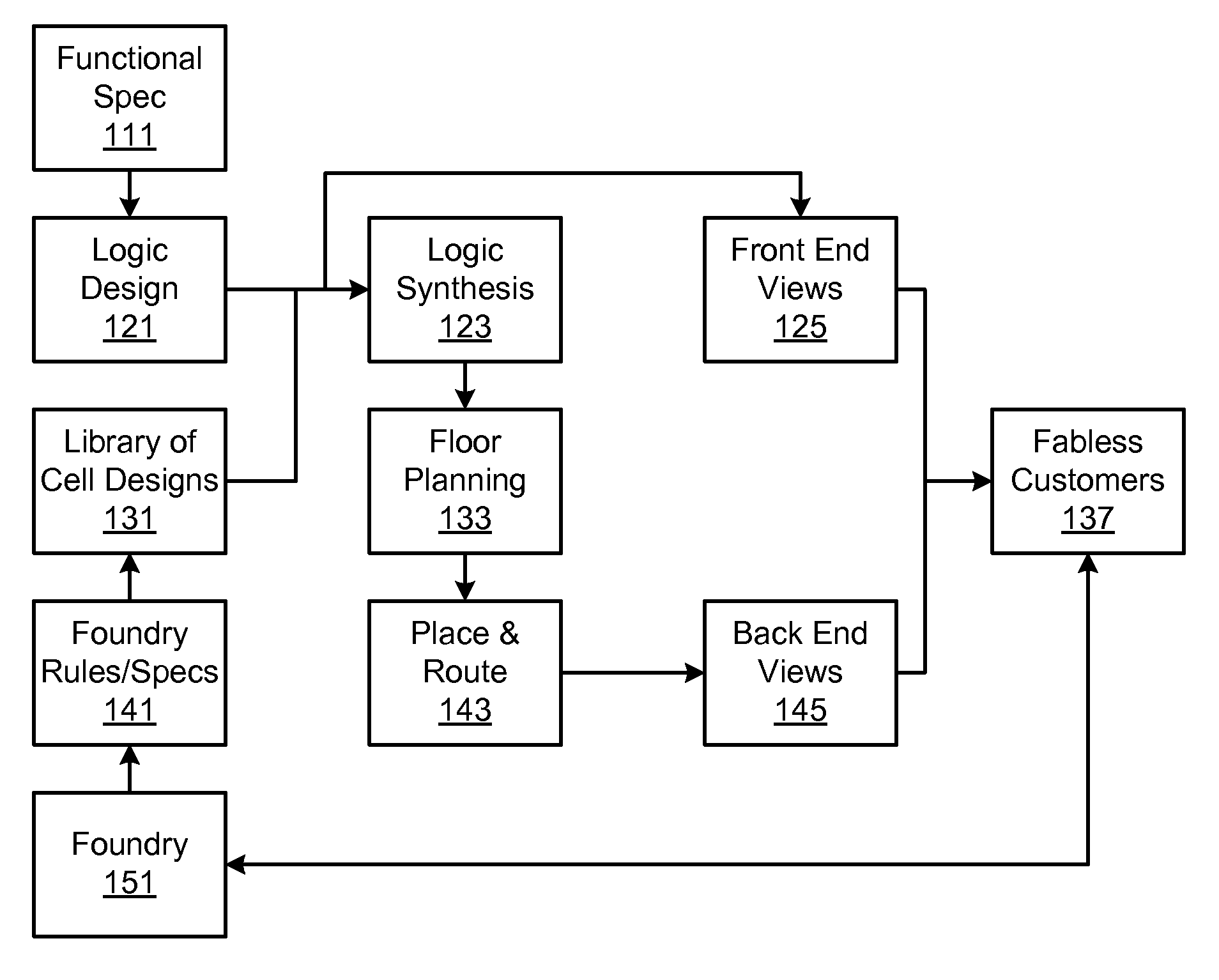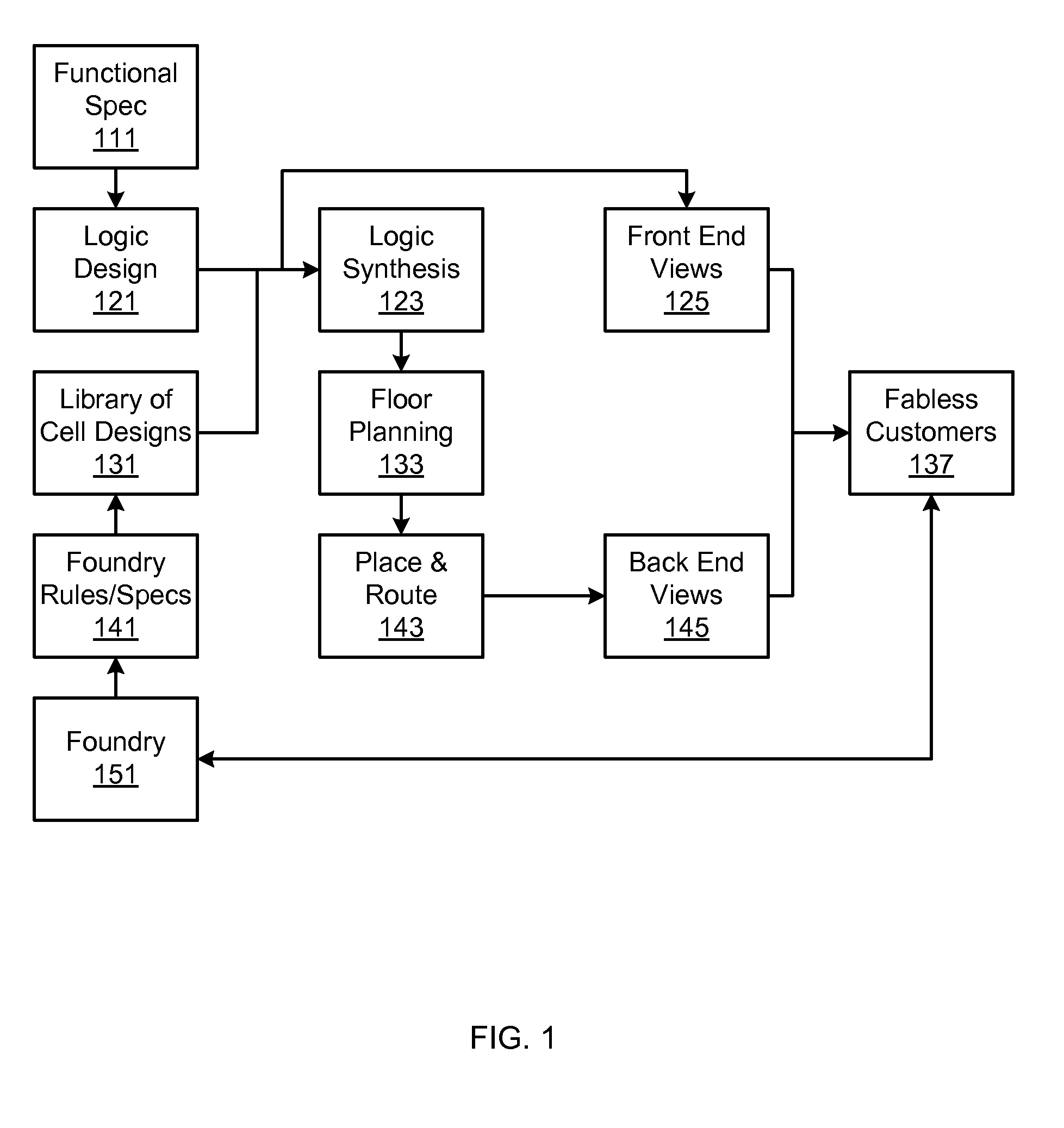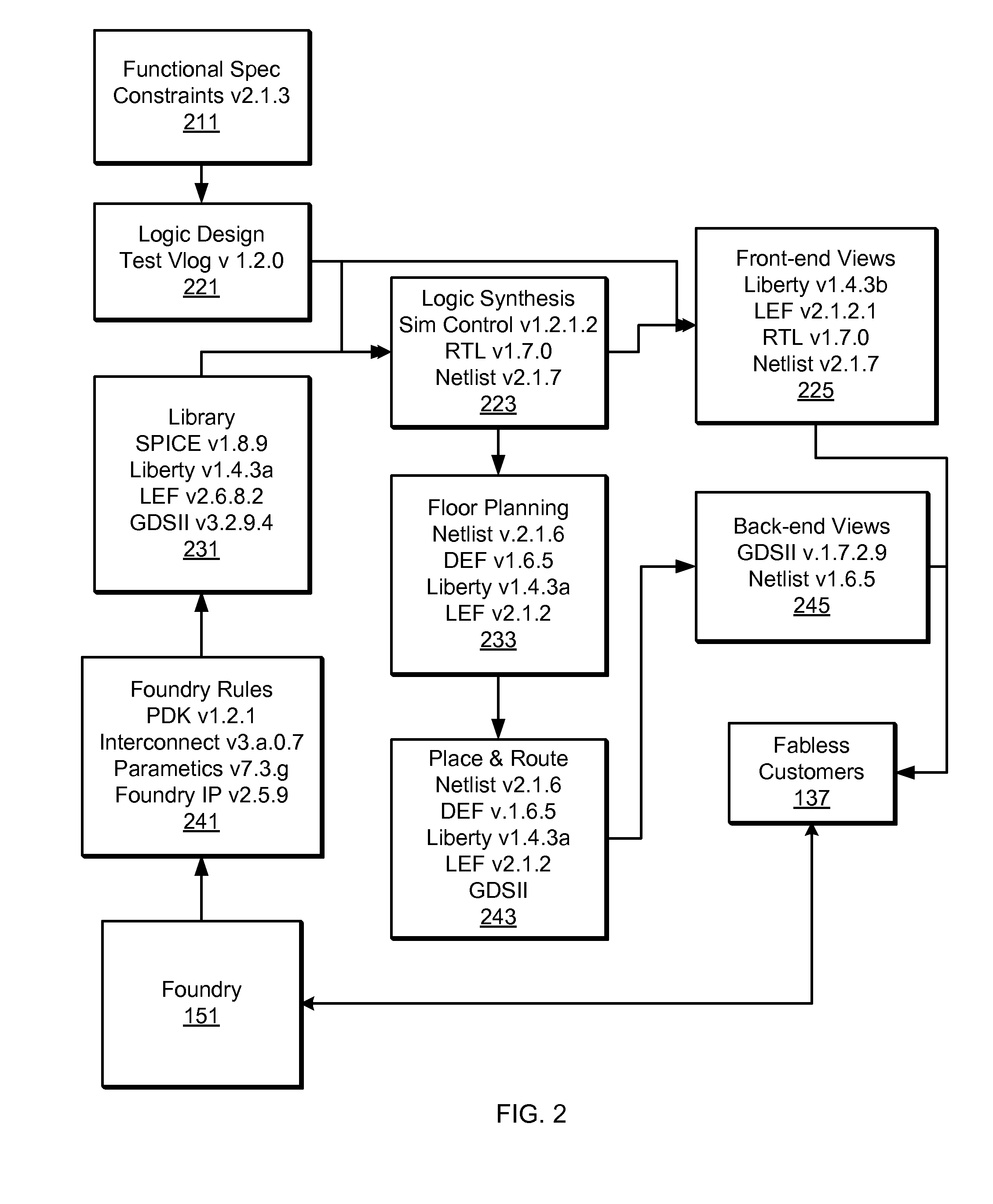Methods and Devices for Independent Evaluation of Cell Integrity, Changes and Origin in Chip Design for Production Workflow
a cell integrity and production workflow technology, applied in the field of granular analysis of design data, can solve the problems of reducing the sensitivity of data analysis to variations in data, limiting the scope of the analysis, and limiting the application of design data to the total factory control, etc., to achieve the effect of reducing the sensitivity of data analysis
- Summary
- Abstract
- Description
- Claims
- Application Information
AI Technical Summary
Benefits of technology
Problems solved by technology
Method used
Image
Examples
example 1
Liberty Formatted Files
[0196]The Liberty library file format provides a way to describe the function and timing of circuits to logic synthesis tools. It is defined by Synopsys and is widely used because Synopsys has published a specification. It is a text-based format that can be viewed easily, but due to the volume of data in Liberty files, they are normally created by software.
[0197]In this first example, we walk through the digesting of a Liberty design language file. Some parts of a Liberty file are unrecorded. “Unrecorded” refers to canonical digesting. Generally speaking, cell names are not digested because doing so would prevent matching of otherwise equivalent cells with different names. Some parsers also skip tokens that are required and provide no additional information, such as fixed-place keywords or layer names (since digests are separated by layer anyway).
[0198]In some formats, the “text” being recorded is actually non-printable binary data, and the descriptions use ke...
example 2
Verilog File Type
[0270]In this example, Verilog files have content digests for the following file elements:[0271]File[0272]File Header[0273]Cell Module Port Definitions[0274]Body of the Cell Module
[0275]The file is scanned to find the module names inside. Separate digests are computed for the port definitions and the body of the module. These are based on the individual Verilog tokens excluding any whitespace.
[0276]Digests are computed and returned for the header of the file (information outside of any module definitions) and for the file as a whole. These include any whitespace.
[0277]Verilog 2005 syntax is presumed, even if a ‘begin_keywords is present. Because only the module structure of the file is being parsed, this should not impact digest calculation for the file (keywords are not interpreted differently than symbols, for example). The file is assumed to be syntactically correct.
[0278]Compiler directives, including macro substitutions, are not interpreted. It is assumed that ...
example 3
Structured Binary File Type
[0321]In this example, structured binary file types, without a custom parser, are treated as Unstructured Binary Files.
[0322]VHDL is a simulation and Register Transfer Logic (RTL) language widely used in integrated circuit design. It is a text-based format commonly created by designers and compiled by logic synthesis tools.
[0323]Generally, without knowing the structure of the binary file, a digest is assigned for all bytes. To assign digests to specific content within a structured binary file, the data structure needs to be known and a parser written for it.
PUM
 Login to View More
Login to View More Abstract
Description
Claims
Application Information
 Login to View More
Login to View More - R&D
- Intellectual Property
- Life Sciences
- Materials
- Tech Scout
- Unparalleled Data Quality
- Higher Quality Content
- 60% Fewer Hallucinations
Browse by: Latest US Patents, China's latest patents, Technical Efficacy Thesaurus, Application Domain, Technology Topic, Popular Technical Reports.
© 2025 PatSnap. All rights reserved.Legal|Privacy policy|Modern Slavery Act Transparency Statement|Sitemap|About US| Contact US: help@patsnap.com



